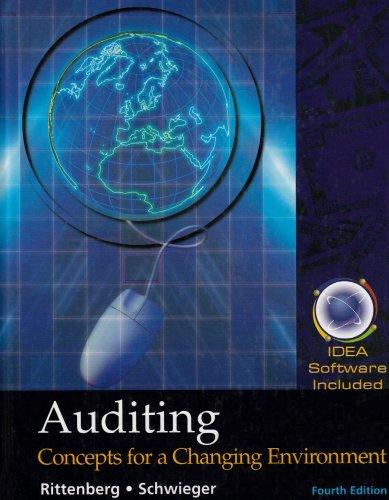The following are findings resulting from various audits of company employee benefit plans: 1. Piecework accountingDuring an
Question:
The following are findings resulting from various audits of company employee benefit plans:
1. Piecework accounting—During an internal audit of a wage incentive plan, an internal auditor found that some of the reported quantities seemed unreasonably high. Employees reported their own piecework production quantities. A comparison of the total employee-reported piecework quantities with independently prepared production reports revealed that totals were as much as 20 percent higher on the employee-reported piecework.
2. Employee health insurance—At the request of management, the internal auditing department was conducting an audit of the company’s health insurance invoices.
Only those charges related to currently enrolled employees should have appeared on the invoices. One thing stood out: The names of some terminated employees were on the invoices.
• A computer run comparing identification numbers of active, eligible employees with those on the insurer’s invoices revealed that benefits exceeding \($100,000\) had been paid on behalf of inactive or former employees. In one instance, an employee who had been terminated for seven years was still receiving benefits.
• One control weakness that the auditors found was the failure of many supervisors to process the forms needed to inform the personnel department of terminations or status changes.
3. Matching contributions—A company has an employee savings plan that provides a matching contribution to participating employees’ savings accounts. When an employee stops participating in the plan, the company suspends matching contributions.
During an audit of the plan, an internal auditor found that the company was still contributing to the accounts of several employees who had ceased to participate. More than \($1.2\) million has been contributed to such accounts.
Required:
a. What is the primary audit risk that should be communicated to management related to each of the three audits just described?
b. What control recommendations should be communicated to management regarding each of the audit findings?
c. Assume that the auditor suspects fraud in the second audit (employee health insurance).
1. What audit procedures should the auditor use to determine if a fraud existed?
2. If a fraud is found, what is the auditor’s responsibility for communicating it to (a) the audit committee; (b) management; and (c) outside regulatory agencies?
Step by Step Answer:

Auditing Concepts For A Changing Environment With IDEA Software
ISBN: 9780324180237
4th Edition
Authors: Larry E. Rittenberg, Bradley J. Schwieger





